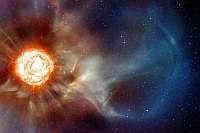OK, so ‘Captain James Tiberius Kirk’ got pinged on Monday for drink-driving, here in New Zealand.
 Well, not actually Kirk, he’s fictional. I mean Chris Pine, who plays him in the movie re-boot. According to the reports, Pine was stopped in Methven (of all places), after a wrap party for a movie he’s been shooting here. It’s made major news internationally.
Well, not actually Kirk, he’s fictional. I mean Chris Pine, who plays him in the movie re-boot. According to the reports, Pine was stopped in Methven (of all places), after a wrap party for a movie he’s been shooting here. It’s made major news internationally.
To me the media frenzy underscored the way Star Trek has been entwined into modern culture. In fifty-odd years since the original Shatner-Nimoy-Kelley series it’s gone from fan fodder to mainstream entertainment.
For me the real appeal of Trek has always been Roddenberry’s optimistic vision for society. This really was futuristic. But there’s also been a lot of focus on its supposed anticipation of today’s tech – everything from automatic doors to cellphones. That’s less compelling. The auto-door and cellphone also hit TV at the same time in Get Smart, underscoring the fact that Trek tech was of its time. Much of its gee-whizz stuff actually drew from prevailing mid-twentieth century visions, all of which missed the bulk of the information age revolution and focussed on mega-rockets and star drives. The best of the Trek stuff, as far as I can tell, came from Robert Anson Heinlein – an American literary great. He was also an engineer, and it showed.

1. Medical beds
McCoy’s sick bay was the epitome of high-tech in 1965, complete with medical beds that monitored patient vital signs. We have them today thanks to doctors inspired by Trek. However, Heinlein described one nearly a decade earlier in Have Spacesuit, Will Travel (1958).
2. Communicators (cellphones).
The Trek communicator was a radio. No cell networks on alien planets – your signal’s got to punch through to the Enterprise in its 200-mile orbit (I’m glad I don’t have to hold a kilowatt transmitter to my ear). However, these days they’re widely taken to be ‘cellphones’. Setting aside Buck Henry’s ‘shoe phone’ in Get Smart, the first description of an actual cellphone, in everyday use, was in Heinlein’s 1948 novel Space Cadet.
3. Tribbles
My favourite Trek episode is David Gerrold’s ‘Trouble with Tribbles’. Proof that Shatner, McCoy and Nimoy were really a comedy trio with Nimoy as the ‘straight man’ (he can also be very funny, check out ‘The Ballad of Bilbo Baggins‘. But I digress.) In ‘Tribbles’, a space station gets over-run with cute ‘cat’ creatures that reproduce asexually if you feed them. The creature – and plot – so precisely followed Heinlein’s ‘flat cat’ from Space Family Stone (1952) (aka ‘The Rolling Stones’) that the producers apparently asked Heinlein for permission. Heinlein himself, incidentally, apparently drew inspiration for his 1952 tale from a 1905 story by Ellis Parker Butler called ‘Pigs is Pigs‘.
4. Starfleet
This is influenced by Heinlein’s ‘Space Patrol’ from Space Cadet. Explicitly – Roddenberry said so. Again, Heinlein had an antecedent – Space Cadet was basically ‘US Naval Academy In Space’. (As an aside, he precisely described the physics of space-walking in this book – 17 years before NASA had to re-discover the principles).
Needless to say, Trek wasn’t the only SF tech Heinlein did first. Remember Star Gate? Go read Heinlein’s Tunnel in the Sky (1955). What about Dr Who‘s TARDIS, that can go anywhere in time and space? Try Heinlein’s Have Spacesuit, Will Travel (1958). And the idea that your star-drive also makes a dandy weapon – a key schtik in Larry Niven’s ‘Known Space’ series? That was a throw-away line in Heinlein’s Time for the Stars (1956).
All of which points to one thing – Heinlein was a very great writer, by any measure – and a great engineer and thinker.
Indeed, some of us encounter his ideas every night, in our own homes, whether we’re reading one of his books or not. Guess who devised (and eventually patented) the modern waterbed?
Copyright © Matthew Wright 2014
Coming up: More science, more writing tips, more fun.
It’s amazing how much SF stuff traces back to Heinlein. He’s like science fiction version of Tolkien.
You ever read The Star Beast, by the way? That’s my personal favorite book of his.
LikeLike
I haven’t read that one. My Heinlein collection consists of the books in print maybe 25 years ago and these days it’s hard to find the ones I didn’t collect then.
LikeLike
It’s certainly worth reading if you get the chance. I ended up buying it as an ebook; far easier than trying to track down an old hard copy 🙂
LikeLike
Seriously, though–DON’T check out the ballad of Bilbo Baggins.
I saw it once in 1979 and it hasn’t left my head since. I write this from the Behavioral Hospital.
LikeLike
True…it was kind of beyond any kind of weird. Actually I think that song (and the video) dwell in their own micro-universe of special weird. . 🙂
LikeLike
I started reading Heinlein “late” compared to the other silver age greats (Asimov, Clarke, Herbert), but I have positively loved everything he wrote. Starship Troopers is an amazing deconstruction of the point of war, and of the price we’re willing to pay for survival. Stranger in a Strange Land is an at-angles approach to how the world reacts to radically new philosophies, up to and including the tendency to martyr such radicals. Time Enough for Love explores the question of well, love, and whether it retains any meaning when one can travel through time.
…And that’s all I’ve read by him. Dangit, too many good books to read!
LikeLike
I read the ‘juveniles’ avidly when I was a kid. Still have most of them. Hard to find his stuff in print these days, unfortunately. He was a fantastic writer…but you’re right, there is so much to read tbese days. My ‘to read’ pile is actually a bookshelf… Seriously!
LikeLike
I think my worst sin on the “TBR” list right now is the box set of Books 1-4 of A Song of Ice and Fire…that I bought in early July 2011. Still haven’t even cracked it open…
LikeLike
The first time I saw a “Roomba” I stopped in slack-jawed amazement and delight, thinking to myself, YES! Daniel Boone Davis lives!
For “Roomba” is nothing more nor less than the “Hired Girl” home appliance set out in Heinlein’s The Door Into Summer.
I’m amazed, though, that the master never thought of this application for “Hired Girl.” It seems to me that Petronius the Arbiter (aka “Pete”) would have:
LikeLike
It’s remarkable how well Heinlein thought through the tech, even so. For me it underscores the way that everything we’ve got now can be traced back to mid- or even early 20th century antecedents in many ways. Often conceptually but sometimes even down to voltages and standard sizes. Or colour. My computer has a black case. Which was the colour of electronic gear way back in the 1920s.
LikeLike
Perhaps that was the origin of the term “black box”?
I think you’re absolutely right. Walther Hohmann, for example, worked out transfer orbits for interplanetary travel in the 1920s — when Goddard’s first liquid fuel rocket had only flown a few hundred feet high in 1926. Then there’s Hugo Gernsback’s amazingly prophetic Ralph 124C1+ … the list could go on!
LikeLike
I just watched the video (replied earlier via my phone). Man, that cat must be glued down to the Roomba…when I was a kid, we had a Siamese who’d either run a mile from any ‘hissy’ sound, or (more usually) turn whatever was making that sound into confetti.
LikeLike
Indeed, Heinlein was a ‘futurist’ as much as a scifi writer. His explorations into science landed in many different fields including sociology in Starship Troopers. It’s a shame that for so many Star Trek is one of the very few examples people know of scifi, when there is so much great stuff out there. For me, I’ve learned a great deal about science from Larry Niven, Arthur C. Clarke, Jerry Pournelle, Gordon R. Dickson, Ben Bova, and Jerry Pournelle (at one time National Science Advisor). It’s rare that their books are made into movies probably because the stories are often too cerebral for mass-media. And then I have to hear how SciFi isn’t serious fiction from those citing Godzilla movies as the precedent for their opinion. *sigh*
Luckily, we’ve had such august fellows like Heinlein to build upon. Just as scientists often build upon the work of previous scientists, it seems SciFi writers do the same thing. Just now I’ve been composing a story in my head and suddenly I realize that the idea is related to “The Integral Trees,” by Larry Niven. I’ll have to mention his book at the story’s end.
LikeLike
I think Asimov, Clarke, Heinlein particularly were all social futurists – I guess the pioneer, who pushed all of them that way, was John Campbell. It never ceases to amaze me how absolutely everybody missed the way the 1990s information revolution would play out. Except Clarke,who described both the technology and the social outcomes in specific detail…in 1964!
LikeLike
Yes, I very much agree. Campbell really built SciFi into the fantastic crystal ball that it is by his demands of his contributing writers.
But now, what will the next great technical revolution be? I think it will be Nanotechnology. Neal Stephenson wrote a book called The Diamond Age in which he detailed many amazing uses for Nanotech, many very subtle, that I thought were truly visionary. If you haven’t read this one, get it. I felt like it’s a direct view into the future.
LikeLike
I’ll look out for it. Nano definitely seems to be the way things are going. It’s interesting how different that is from the big engineer visions of the mid twentieth century. But I guess Von Braun, Korolev et al took us to the technical limits of rocketry half a century ago. There’s been refinement but none of the huge leaps needed for the dieselpunk sf vision. Alas…
LikeLike
Yeah, rocketry seems to be at a dead end. A new propulsion source/arrangement is needed to go forward. Escape velocity requires so much energy/lb it’s extremely costly. I’m hoping scramjet engines on smaller craft will be an answer.
LikeLike
Hopefully. We have to do something to unstick space travel from its current rut. I lament some of the would have beens though. Like British Aerospace ‘Mustard’ which really broke the mould.
LikeLike
I had to look MUSTARD up. My gosh, this was started in 1968! If only, if only…
LikeLike
“Pigs is Pigs” was hilarious. I did not know the connection to “Tribbles” but it makes sense. Heinlein set the sci-fi bar very high.
LikeLike
He did. Fantastically high…we all walk in his shadow.
LikeLike
Wow…a guy makes millions of dollars, and he can’t order a cab? What about the posse? Isn’t someone supposed to drive “the man” when he can’t stand up? Good grief.
LikeLike
I don’t know the details beyond the news reports but it does seem a bit odd. Made big news here for a day or two, I suspect on the back of the Trek factor. (Funny Kiwi connection beyond this – Karl Urban is a New Zealander. Comes from Wellington.)
LikeLike
While I can’t entertain your notion that Chris Pine is James T. Kirk, your Heinlein accolades are well-placed.
LikeLike
Not my notion. Pine played Kirk twice. Whether he is as good as Shatner is another matter, though we have to give credit for the writers leaving room for character development. In that line, I have to say that Karl Urban does a brilliant DeForest Kelley.
LikeLike